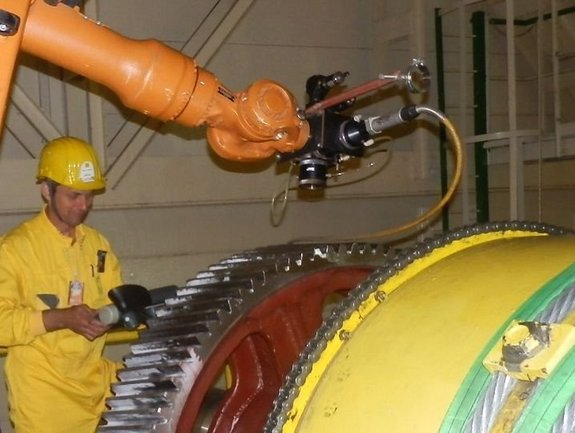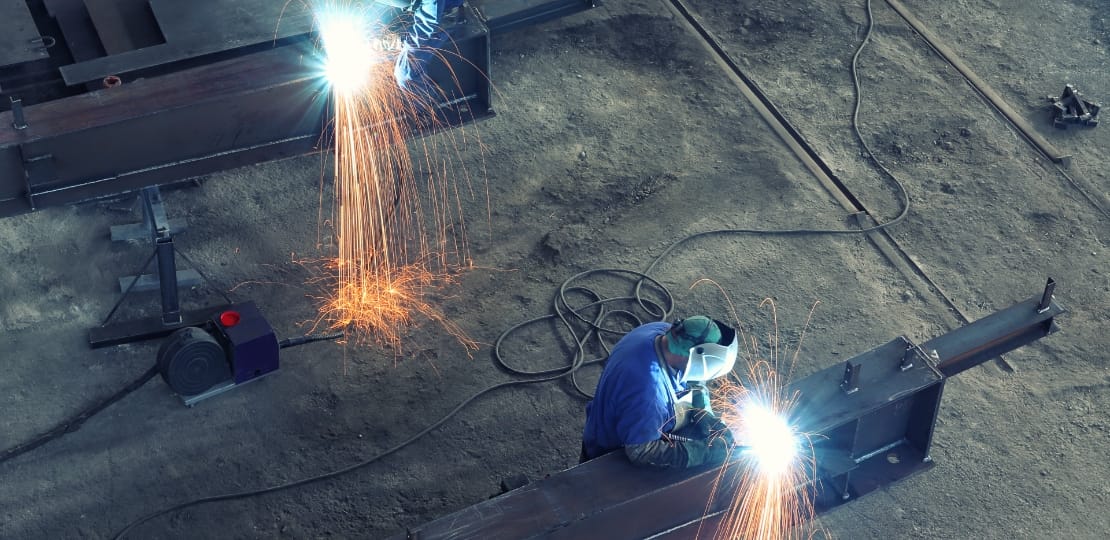Common Welding Repair Service Issues and Just How to Address Them Efficiently
Welding repair services often encounter a series of issues that can threaten the honesty of the end product. Common problems consist of insufficient infiltration, porosity, and imbalance, among others. Each defect provides unique challenges that need particular approaches for resolution. Comprehending these problems is essential for welders aiming to enhance their results and skills. This conversation will explore these usual welding repair concerns and reliable techniques to address them.
Poor Penetration
Poor penetration occurs when the weld steel stops working to totally fuse with the base material, causing weak joints and potential architectural failings. This concern often comes from inadequate heat input, wrong electrode angle, or improper welding speed. Welders might experience poor penetration due to a mistake of the required criteria for a specific material thickness or type. Additionally, contamination on the base material's surface area can prevent efficient bonding, worsening the trouble. To attend to insufficient penetration, welders should guarantee suitable settings on their devices and preserve a clean work surface. Regular evaluation of welds is suggested to identify any kind of shortages early, enabling prompt corrections and the avoidance of compromised architectural honesty in welded assemblies.
Porosity
Porosity is a typical issue in welded joints that manifests as small gas bubbles entraped within the weld steel. This issue can endanger the integrity of the weld, bring about minimized toughness and possible failing under stress and anxiety. Montana Mobile Welding and Repair Belgrade Welding. Porosity commonly emerges from contamination, wetness, or improper welding strategies, which permit gases to leave into the molten weld pool. To attend to porosity, welders must ensure appropriate surface prep work, maintain a clean workplace, and make use of ideal welding criteria. In addition, selecting the best filler product and shielding gas can mitigate gas entrapment. Regular assessment and testing of welds can aid determine porosity early, ensuring prompt rehabilitative activities are taken, therefore protecting the quality and integrity of the bonded structure
Misalignment
Imbalance in welding can develop from various aspects, including inappropriate configuration and thermal growth. Understanding the source is essential for reliable resolution. A number of correction strategies are offered to straighten components and assure structural stability.
Root causes of Misalignment
Welding imbalance usually comes from a variety of underlying problems that can compromise architectural stability. One key reason is inappropriate fit-up of elements prior to welding, which can lead to gaps and unequal surface areas. Variants in thermal growth throughout the welding procedure can also result in distortion, specifically if the materials being signed up with have various coefficients of growth. Additionally, inadequate clamping and fixturing may fall short to hold components safely in location, resulting in motion during welding. Improperly conserved devices, including welding machines and devices, might present disparities in the weld bead, additional adding to imbalance. Driver error, stemming from insufficient training or experience, can additionally play a substantial role in creating misaligned welds.

Correction Strategies Available
Resolving misalignment successfully needs a combination of rehabilitative strategies tailored to the details problems available. One common method is the use of jigs or components to hold components in the appropriate setting throughout welding, ensuring consistent alignment. Additionally, preheating the products can help in reducing distortion and improve fit-up. For substantial imbalance, mechanical realignment strategies, such as making use of hydraulic jacks or clamps, can be used to remedy the position prior to welding. Post-weld warmth treatment might also be essential to ease stresses caused by misalignment. Careful evaluation and change throughout the setup phase can prevent misalignment problems from ending up being considerable troubles, advertising a smoother welding procedure and boosting total structural stability.
Distortion
Distortion is a common difficulty in welding that can occur from different variables, consisting of irregular cooling and heating. Comprehending the root causes of distortion is vital for executing efficient avoidance methods. Addressing this concern not just boosts structural integrity yet also enhances the general quality of the weld.
Sources of Distortion
When subjected to the extreme warm of welding, products usually go through adjustments that can bring about distortion. This phenomenon largely emerges from thermal expansion and tightening throughout the welding process. As the weld area warms up, the product expands; upon air conditioning, it contracts, which can develop interior anxieties. Additionally, irregular home heating throughout a work surface can worsen these anxieties, leading to warping or flexing. The sort of product likewise plays a significant role; steels with differing thermal conductivity and coefficients of expansion might react in a different way, causing unpredictable distortions. Furthermore, poor joint design and insufficient fixturing can add to imbalance during welding, raising the probability of distortion. Understanding these reasons is important for reliable welding fixing and avoidance techniques.
Prevention Techniques
Efficient prevention strategies for distortion throughout welding concentrate on regulating warm input and ensuring proper joint design. Preserving a constant heat input helps to minimize thermal expansion and contraction, which can lead to distortion. Making use of techniques such as pre-heating the workpiece can also reduce the temperature level gradient, advertising uniform home heating. In addition, choosing proper joint styles, such as T-joints or lap joints, can improve check my site security and decrease anxiety focus. Applying appropriate fixturing to safeguard the work surfaces in position further help in keeping placement throughout the welding procedure. Lastly, staggered welding series can disperse warm extra uniformly, stopping localized distortion. By applying these techniques, welders can substantially reduce the chance of distortion and improve the overall high quality of their welds.
Fracturing
Breaking is a typical problem encountered in welding repair work, usually arising from various variables such as incorrect cooling prices, material selection, or insufficient joint prep work. The event of fractures can substantially jeopardize the stability of the weld, leading to prospective failings throughout procedure. To resolve this concern, welders have to first analyze the origin, ensuring that products are compatible and suitably selected for the specific application. Furthermore, managing the cooling rate during the welding process is vital; quick cooling can cause stress and bring about cracking. Proper joint design and preparation additionally outlaw welding contribute to decreasing the threat. Implementing these methods can enhance weld top quality and sturdiness, inevitably lowering the chance of fracturing in completed weldments.

Incomplete Fusion
A substantial issue in welding fixings is incomplete combination, which happens when the weld metal does not sufficiently bond with the base material or previous weld passes - Belgrade. This defect can bring about weaknesses in the joint, potentially compromising the stability of the bonded framework. Variables adding to insufficient blend consist of insufficient warm input, incorrect welding strategy, and contamination of the surfaces being joined. To resolve this concern efficiently, welders must guarantee proper pre-weld cleansing and surface prep work, as well as readjust their welding specifications to attain adequate infiltration and fusion. Regular assessment throughout the welding process can likewise assist recognize incomplete blend early, permitting prompt corrective measures to improve the overall top quality of the weld
Overheating
While welding repairs can improve structural integrity, overheating provides a substantial difficulty that can lead to material degradation. Too much warm during welding can modify the mechanical properties of steels, leading to lowered stamina, increased brittleness, and bending. This sensation is particularly crucial in high-stress applications where architectural integrity is vital. Determining overheating can include aesthetic examinations for staining or distortion, along with monitoring temperature during the welding process. To minimize the risks related to getting too hot, welders must utilize suitable strategies, such as managing heat input, adjusting traveling rate, and making use of suitable filler materials. Furthermore, carrying out pre- and post-weld warmth treatments can help bring back material properties and boost the general quality of the repair, making sure long-term performance and security.
Often Asked Inquiries
What Are the Common Signs of a Welding Issue?

How Can I Evaluate My Welds for Quality?
To examine welds for quality, one can use aesthetic inspections, ultrasonic screening, and radiographic approaches. go to this website Each strategy assures structural stability, determines flaws, and validates adherence to specified criteria, eventually enhancing the integrity of the welded joints.
What Safety Precautions Should I Take While Welding?
When welding, one need to prioritize safety and security by using suitable personal safety devices, making certain proper air flow, protecting combustible materials away, preserving a clean office, and being conscious of environments to avoid crashes and injuries.
Can I Fix a Weld Without Renovating the Entire Joint?
Repairing a weld without renovating the whole joint is possible, relying on the damages (Welding). Methods such as grinding, adding filler product, or using a welding process can effectively resolve specific flaws while preserving the surrounding framework
What Devices Are Essential for Effective Welding Services?
Essential tools for effective welding repair services consist of a welding equipment, cord brush, grinder, safety equipment, clamps, and filler materials. Each device plays a vital function in making certain top quality and safety throughout the repair procedure. Porosity normally develops from contamination, wetness, or improper welding techniques, which enable gases to escape into the liquified weld pool. Improperly maintained equipment, consisting of welding equipments and devices, may introduce incongruities in the weld bead, further adding to imbalance. When subjected to the intense warmth of welding, materials often go through modifications that can lead to distortion. Splitting is a typical problem experienced in welding repairs, commonly resulting from various factors such as improper cooling prices, material selection, or inadequate joint prep work. A significant problem in welding repairs is incomplete combination, which happens when the weld metal does not effectively bond with the base material or previous weld passes.